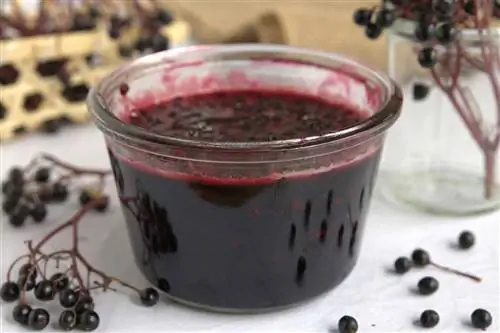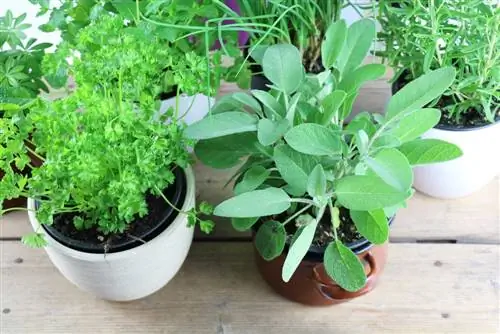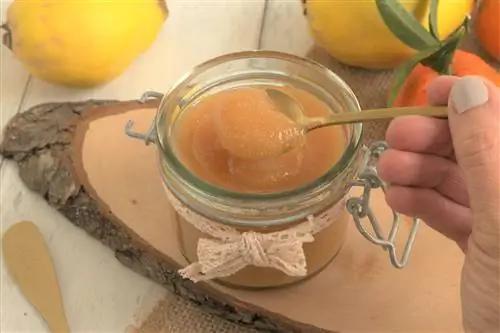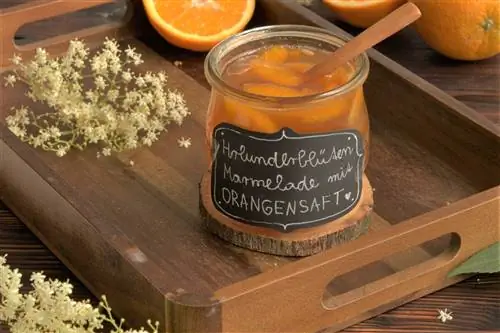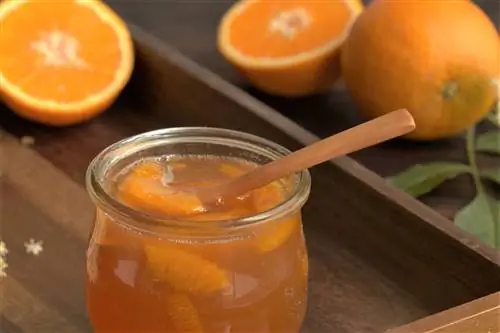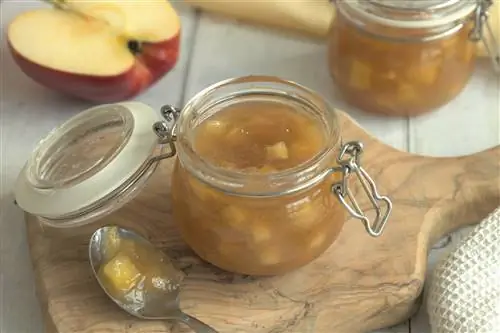- Author admin [email protected].
- Public 2023-12-17 03:39.
- Last modified 2025-01-24 12:45.
You can use elderberry jam as a medicine, food and dye. However, you must know that unripe berries and the seeds of ripe berries contain a poison, which can cause diarrhea and vomiting in children and sensitive people. That's why the berries must not be eaten raw. When making jam, the berries are heated. The “poison breaks down” and the berries are non-toxic. In addition to jam, you can make soup, jelly, puree and juice from the berries. In many places a kind of syrup is made from the flowers, which can be used to make elderberry lemonade or elderberry sparkling wine. Elderberry oil is used in the cosmetics industry, pharmacy and medicine.
Elderberries contain lots of vitamin C and vitamin B, fruit acids, essential oils and antioxidants. But when heated, a lot of it is lost.
Collecting elderberries
If you don't have a tree or bush in your garden, you can find the berries everywhere in nature. You just have to go for a walk or ride a bike with your eyes open. The best berry umbels are found on trees that are somewhat shady. If they are in the sun too much, you have a lot of work sorting out dried berries. You should make sure to only use ripe berries if possible. This isn't always easy, because there are often green, completely unripe, red and ripe berries attached to a single umbel.
Processing the berries
The berries obviously need to be washed. You also have to sort them out. Dried or unripe berries are sorted out and plucked from the cones before they are removed. As with blueberries, the ripe berries can be separated from the cones with a comb or fork. If you want to get a jam without fruit seeds, the seeds must be removed. To do this, press the berries through a narrow-meshed sieve. You can also use a juicer, but then you can only make elderberry jelly from the juice. But it also tastes delicious. If the seeds don't bother you (similar to raspberries), you can simply puree the elderberries. This takes less work and is simply quicker.
Cooking jam
The mass must be weighed in order to calculate the preserving sugar and then placed in a large pot that is as high as possible. This is important because the mixture foams properly when cooking and otherwise the foam will swell over the edge of the pot. Add water, a little lemon juice and preserving sugar according to the manufacturer's instructions. Since elderberry hardly has any gelling substances of its own, you can plan on adding a little more gelling sugar. The fruit-sugar mixture is slowly heated and constantly stirred. After it has boiled and the sugar has dissolved, stir for another 4 to 5 minutes and then you can do the gelling test. If the mixture does not solidify, you should add a little more preserving sugar and continue stirring for a while until the mixture has the right consistency. Then you can fill the finished jam into the prepared jars and close them.
Editor’s Tip
If you don't want to risk discolored hands, you should only touch the fruit with household gloves. Scrubbing and washing usually doesn't help, the hands or fingers remain discolored for a long time.

